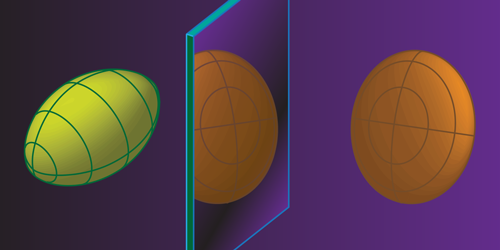Distorting Nuclear Mirror
The development of nuclear theories was aided by a postulated symmetry of the strong interaction holding nucleons together. This interaction, it was initially thought, should be independent of particle charge, allowing neutrons and protons to be regarded as two states of the same particle. However, this “isospin” symmetry isn’t exact—as demonstrated, for instance, by the slight mass difference between protons and neutrons. Researchers have previously accounted for such manifestations of isospin symmetry breaking by tweaking nuclear theories. But now, Kathrin Wimmer, of the Institute for the Structure of Matter in Spain and of the University of Tokyo, and colleagues have shown that two “mirror” nuclei exhibit a degree of symmetry violation that current models can’t explain [1].
At an ion accelerator, the team produced different nuclei with the same mass number: krypton (36 protons and 34 neutrons), bromine (35 and 35), and selenium (34 and 36). Hitting a gold foil, these nuclei produced gamma rays at the frequencies of specific nuclear transitions. By measuring the gamma-ray intensity at these different frequencies, the researchers extracted not only the transition energies—which had been done previously—but also the transition probabilities. These probabilities are directly related to the nuclear wave functions. Compared to previously used observables, these probabilities are more sensitive probes of how the wave functions are affected differently by neutrons and protons.
The experiments demonstrate an unexpectedly large isospin symmetry violation: transitions in the mirror nuclei krypton and selenium have probabilities that deviate significantly from theoretical predictions. These differences may reflect changes in nuclear shapes, say the authors: selenium is probably oblate—like a lentil—while krypton is much more deformed and probably prolate—like an American football.
–Matteo Rini
Matteo Rini is the Editor of Physics Magazine.
References
- K. Wimmer, “Shape changes in the mirror nuclei 70Kr and 70Se,” Phys. Rev. Lett. 126, 072501 (2021).




